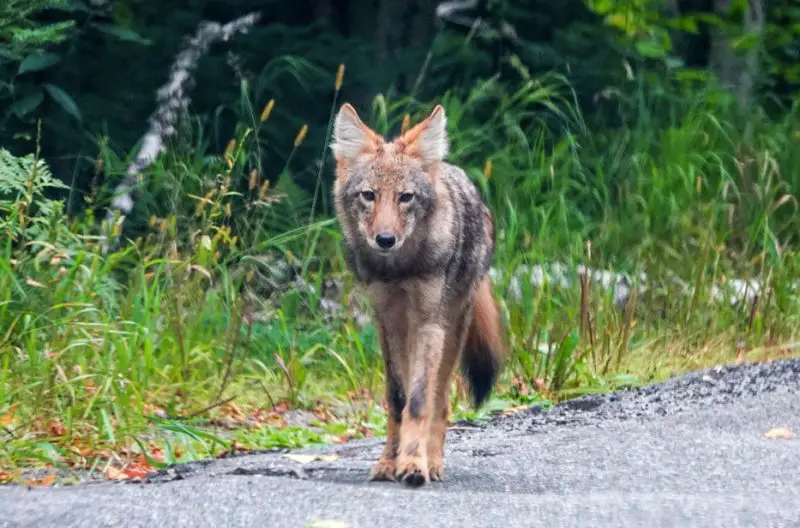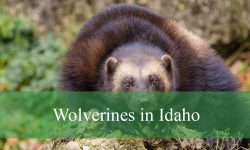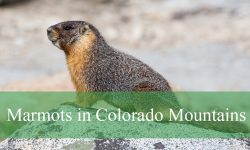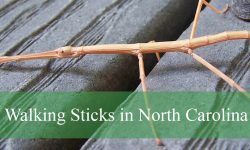Coyotes have become one of the most surprising wildlife residents in New York’s expanding suburbs. For many years, people assumed these animals belonged only in deserts, mountains, or remote Western plains. Yet across Westchester, Rockland, the Hudson Valley, and even sections of Long Island, coyotes have quietly established territories woven through forests, drainage corridors, and green spaces between homes.
Their presence often goes unnoticed, not because their numbers are small but because coyotes have adapted to living in the unseen layers of suburban landscapes. They move through shadows, stay active at hours when neighborhoods fall quiet, and use terrain that humans rarely observe closely. What appears to be occasional sightings is actually a small glimpse of a larger, hidden world.
Coyotes reshape ecosystems, influence local wildlife populations, and navigate suburban environments with intelligence refined over decades. Understanding who they are, how they behave, and why they thrive in New York suburbs reveals a narrative much more complex than their reputation suggests.
The Arrival of Coyotes in New York

A Species That Reclaimed the Northeast
Coyotes did not historically occupy the northeastern United States. Their expansion began only after wolves were eliminated from the region. Over generations, coyotes gradually moved east, crossing farmland, river valleys, and recovering forests. By the mid-1900s, they had reached upstate New York. By the 1990s and 2000s, they began appearing in suburban counties surrounding New York City.
This expansion required adaptability. Coyotes changed their prey preferences, adjusted communication techniques, and learned to navigate human-dominated landscapes. Their eventual arrival in New York suburbs was not accidental but the product of slow and consistent ecological adjustment.
How Human Landscapes Helped Them Spread
Suburbs unintentionally create ideal habitats. Lawns provide hunting grounds for rodents. Decks, sheds, and wooded edges mimic natural cover. Roadways create corridors for movement, and stormwater basins supply water. Gardens provide fruit. Compost piles attract small mammals. All these factors form a mosaic of resources.
Coyotes use these mosaics efficiently. They learn which neighborhoods stay quiet at night. They avoid active areas and map out passages that allow them to move with minimal detection. Suburban resources replace natural ones, making the landscape workable even when intact forests are limited.
The result is a wildlife species that thrives in the margins of human life.
Hidden Behaviors in Suburban Coyotes
Their Deeply Nocturnal Lifestyle
Most residents see coyotes only occasionally because the animals adjust their activity patterns based on human behavior. During daylight, they rest in secluded spaces—brush piles, forest patches, overgrown lots. As evening falls, they venture out to travel, hunt, and patrol.
Their activity peaks during dawn and dusk, but in high-density neighborhoods, coyotes often push their movement deeper into nighttime hours. Their ability to shift rhythms so precisely demonstrates a sophisticated response to human presence.
Nighttime is when coyotes reveal their true nature: silent, strategic, and far more widespread than appearances suggest.
Invisible Travel Corridors
Coyotes rarely move randomly. They follow established pathways:
• creek lines behind neighborhoods
• the edges of golf courses
• utility corridors and pipelines
• train tracks and abandoned rail beds
• thin strips of forest between housing developments
• school grounds after dark
These corridors connect suburban spaces into a continuous network. Coyotes memorize this network with impressive accuracy, learning where people walk dogs, where traffic slows, and where cover remains thick enough to slip through without being seen.
Because these routes lie in transitional zones humans rarely pay attention to, coyotes remain hidden even in densely settled counties.
A Social Structure People Rarely Observe
Coyotes appear solitary, but their social organization is more complex. Suburban coyotes typically form family units made of a breeding pair and several offspring. Older siblings often help raise younger pups before leaving to establish their own territories.
This structure ensures stable numbers rather than uncontrolled population growth. Territories remain occupied by a single family group, reducing the chance of overcrowding.
Residents may think “coyote numbers are exploding” when in reality the same family has lived there for years, simply learning to stay out of sight.
Diet Secrets of Suburban Coyotes
What They Truly Eat in New York Neighborhoods
Coyotes are opportunistic omnivores, and their suburban diet includes:
• voles, mice, and rats
• rabbits and squirrels
• insects and beetles
• fallen fruit from yards
• wild berries in forest edges
• roadkill and other carrion
Their role as rodent controllers is significant. Rodents concentrate near homes, compost, and bird feeders, creating rich food sources for coyotes. This ecological service often goes unnoticed but contributes to healthier communities.
The Misconception About Pets
While stories circulate about coyotes hunting pets, such events are less common than assumed. Cats that roam at night are at risk from many predators—not only coyotes but also owls, foxes, and cars. Small dogs face danger mainly when off-leash or near wooded areas at dusk.
Coyotes generally prefer natural prey because it involves less risk. Their hunting strategy emphasizes stealth and efficient energy use, not conflict.
Seasonal Dietary Shifts
Coyotes alter diets with seasonal abundance:
• Spring: bird eggs, insects, emerging rodents
• Summer: fruit, insects, small mammals
• Fall: berries, apples, squirrels
• Winter: carrion, rodents beneath snow, leftover acorns
Their ability to shift diets helps maintain stable populations even during harsh winters.
Communication: The Secret Language of Coyotes
Why Their Howls Sound Like Many Voices
A single family of coyotes can produce a range of vocalizations—howls, yips, barks, whines. Their voices overlap and echo, creating the illusion of a larger group. Suburban neighborhoods amplify sound, especially at night, making them seem closer and more numerous.
These sounds maintain group cohesion across distance. Howls help coyotes identify one another’s locations and defend territory without physical confrontation.
Scent Marking and Unseen Boundaries
Coyotes communicate through scent—urine, scat, and gland secretions. These markers define territory lines that neighboring groups generally respect. This invisible map keeps populations balanced.
When coyotes are removed from an area, vacant territory attracts new individuals quickly. This is why removal or relocation rarely reduces numbers long-term; it simply opens space for newcomers.
Understanding scent boundaries helps explain why coyotes spread but do not overcrowd.
Reproduction and Pup Survival
The Hidden Breeding Season
Breeding occurs in late winter when coyotes remain less visible. Pregnant females search for secluded den sites in early spring—dense shrubs, hollow logs, brush piles, or wooded edges.
These dens stay hidden even in developed neighborhoods. Residents often walk past them without realizing a coyote family is living only a few feet away.
Pup Development From Birth to Dispersal
Pups are born blind and grow quickly during the first weeks. Adults bring food to the den, often regurgitating partially digested meals. As pups grow stronger, they begin exploring nearby areas under parental supervision.
By fall, young coyotes start venturing farther. Some remain with the family another year, while others begin dispersing—sometimes traveling miles to find unoccupied territory.
Dispersal is one of the main reasons coyotes appear unexpectedly in new suburbs.
Hidden Ecological Effects in Suburbs
Coyotes and Rodent Control
One of the major contributions coyotes make is controlling rodent populations. Suburbs with stable coyote populations often show fewer issues with rats and mice. This control helps reduce disease spread and protects gardens and landscaping.
Without coyotes, rodent populations could increase rapidly due to abundant food waste and shelter.
Influence on Other Wildlife
Coyotes indirectly stabilize populations of:
• raccoons
• skunks
• feral cats
• opossums
• ground-nesting birds
By reducing competition and predation pressure from certain species, they help maintain ecological balance in fragmented suburban habitats.
Coyotes and Deer Populations
While coyotes rarely hunt adult deer, they can reduce fawn survival in certain areas. This plays a role in moderating deer populations, which helps protect forest regeneration and reduces vehicle collisions.
In regions where deer numbers are high, coyotes provide a natural regulatory force.
Why Coyotes and Humans Cross Paths
Overlapping Movement Patterns
Most encounters happen because people and coyotes use the same landscape features:
• wooded trails
• creekside walking paths
• edges of parks
• golf courses
• early-morning dog-walking routes
Coyotes are not seeking confrontation; they simply move through areas that offer safety and quiet.
Seasonal Visibility Increases
Residents tend to notice coyotes during:
• early spring (pup-rearing season)
• late fall (young dispersing coyotes)
• winter (more daytime movement)
These periods make coyotes appear more numerous, even though population size remains stable.
Human Behaviors That Attract Coyotes
Unintentionally, people provide incentives:
• outdoor pet food
• unsecured garbage cans
• bird feeders attracting rodents
• compost piles
• fallen fruit not removed from yards
Removing attractants significantly reduces close encounters.
Myths and Misunderstandings
Myth: Coyotes Hunt in Large Packs
Reality: They live in small family units, not large coordinated packs like wolves.
Myth: Coyotes Will Attack Humans
Healthy coyotes avoid humans. Incidents are extremely rare and typically involve feeding behavior or dogs approaching dens.
Myth: Coyotes Only Live in Forests
They adapt to nearly any landscape—industrial zones, golf courses, school grounds, even fringes of city parks.
Myth: Seeing Coyotes During Day Means They Are Dangerous
Seeing a coyote during daylight does not indicate aggression. They may simply be traveling, hunting, or moving dens.
Managing Coexistence in New York Suburbs
Keeping Pets Safe
• Supervise small pets outdoors
• Walk dogs on a leash, especially near wooded edges
• Avoid letting cats roam at night
• Use motion lights near yards
These simple measures prevent most negative encounters.
Reducing Attractants
• Move pet food indoors
• Secure trash bins with tight lids
• Remove fallen fruit
• Limit birdseed spillage
• Maintain yard cleanliness
A clean yard discourages both coyotes and rodents.
Behavior During an Encounter
If you encounter a coyote:
• Maintain eye contact
• Stand tall
• Clap or speak firmly
• Make yourself appear larger
• Give the animal space to leave
These actions encourage coyotes to continue avoiding human areas.
Frequently Asked Questions
Are coyotes dangerous to people?
Incidents are rare. Coyotes avoid humans unless fed or provoked.
Do coyotes attack dogs?
They may approach small dogs, especially near dens. Leash walking reduces risk.
Why do coyotes howl at night?
Howls coordinate family members and maintain territories.
How many coyotes live in a suburban area?
Usually one family per territory, not large groups.
What do coyotes eat in neighborhoods?
Rodents, rabbits, fruit, insects, carrion, and occasionally pets if left unsupervised.
Are coyotes increasing in New York?
Their visibility increases, but territories naturally limit population density.
Do coyotes carry diseases?
They can carry rabies like any mammal, but cases are rare.
Should coyotes be removed?
Removing them creates space for new coyotes and rarely solves long-term problems.
Final Thoughts
Coyotes have become subtle architects of suburban ecology in New York. They shape wildlife communities, regulate rodents, and move through landscapes with precision developed over decades. Their presence often occurs out of sight, revealing only fragments of their life through distant howls, fleeting shadows, or tracks found after snow.
Understanding their hidden behaviors helps residents coexist respectfully and confidently. Coyotes are neither intruders nor invaders; they are adaptive survivors navigating human-modified environments with intelligence and caution. Their story is a reminder that even in suburban neighborhoods, the natural world continues to thrive just beyond the edge of human perception.






